I personally get an average span of (roughly) 1 to 3 blisters per couple of weeks, particularly when it’s the spring/summer season and our group of hoopers bang it out in the park almost ’till dark. So how to prevent blisters in basketball you ask?
Well to answer, we need to dive deep into the topic. Let’s do just that.
HERE’S WHAT YOU’LL LEARN
The truth is, no one can completely ensure there’s no chance of a blister occurring despite you taking advantage of all the tips & tricks known to mankind. But I wrote this guide to filter out some of the B.S. in the form of guessing, untrustworthy sources, or marketing to sell a product. Yes, all of this can be found when we’re talking blisters.
Let me break it down to you what I’ve learned so far myself by playing and what the research currently shows us on the annoying phenomenon of blisters: what we actually know about blisters so far, what can cause one, and what are the ways to manage them or prevent them in the future.
I’ll also give my regularly updated shoe options that I currently find to stay either blister-free or at least reduce the chances of it happening on the basketball court.
WHAT WE (ACTUALLY) KNOW ABOUT BLISTERS SO FAR
How does it form? Why? Can we treat it? Prevent it? We gotta stick to credible research & tried-and-true stuff!
While it’s something none of us can fully control or completely prevent, through my years of being into sports & playing basketball, I’ve noticed, tested, and researched what are usually the main tendencies that possibly cause blisters and what are some of the things we can do to help fight it.
But first, here’s a bit about how a blister forms…
HOW A BLISTER EMERGES
You guessed it – friction. Especially common among active individuals, a blister is caused by an overwhelming amount of frictional forces between the skin area and the material/object that comes in contact with it.
So, you play ball in your hoop shoes, sweat builds up inside the shoe causing even more friction and if a part of your shoe constantly rubs an area of your skin during various movements, it can potentially form a blister.
But if we’re talking specifics, a recent study on friction blisters by Robert A Schwartz, MD, MPH described the exact pathophysiology (the process of a blister creation) by having subjects rub the skin at a consistent, constant force.
Turns out, a mild form of exfoliation takes place on the rubbed area of the skin which means a layer of your skin cells (commonly dead cells) is removed and with that, slight erythema (skin irritation, reddening) also appears on that focal point of the skin.
Next, a zone of pallor (skin getting pale) forms around the irritated area, and over time, the pallor extends into the core of the erythematous skin area and this forms a blister. This results in discomfort, especially if you’re playing a sport like basketball and need to move around. Quickly.
The pale area of the skin that often looks like a bubble is the outer layer of the blister and is referred to as the roof. Peeling off the top means you’re deroofing the blister and leaving the area once again susceptible to infections and further irritation. We’ll talk about what you should with this later!
But why should we take blisters seriously? Not every human is equal and for some, a simple blister that gets infected might be very severe or even dangerous: the impetigo being the most common bacteria that forms inside blisters can turn into something as serious as cellulitis or sepsis.
WHAT’S KNOWN ABOUT THE CAUSES OF BLISTERS?
The likelihood of a blister emerging on your skin is based on the level of friction force as well as the number of times the problematic spot is rubbed against an object/material in a consistent manner.
The most problematic areas of the skin are thick, adherent areas. This means you’ll usually see blisters forming on the palms, heels, soles, and dorsa of the fingers.
Most research & studies you’ll find on blisters will be based on subjects that are in the military or they’re athletes. Both fields can be taken as great, practical examples that tell us a bit about what causes blisters and what are the main tendencies in terms of your apparel, human-specific differences, and external factors.
The same study on blisters found out that socks of different properties, the way your shoes fit, moist buildup, and even gender all have effects on the formation of blisters. Wearing socks that don’t induce as much friction against the skin proved to help decrease the chances of your skin getting irritated.
Heat and sweat build-up inside a shoe can accelerate the chances of a blister emerging since your skin can become macerated (overly softened skin), thus becoming more susceptible to friction & irritation.
However, the moisture factor is a bit of a tricky one. Moist on the skin surface can increase friction and thus possibly cause a blister while especially moist skin can actually decrease friction, creating a lubrication effect.
Some interesting stuff was also found out regarding gender-specific factors. Turns out that the female skin is naturally more sensitive to friction while it’s moist. Guys – you’re in luck with this one.
THERE’S SOMETHING TO KNOW ABOUT TREATMENT & PREVENTION.
We’ll talk about the specifics of treatment & prevention methods in the later section but there’s something important to know about it first. You need to stick to proven, tested methods to ensure you’re not doing more harm than good.
There are a bunch of claims lurking in the realms of the Internet which may or may not help treat a blister but believe it or not, some of the stuff suggested can even be risky for your own health. Let’s talk about the stuff you should avoid before getting into the meat.
A good example would be a 1995 study on blisters by J J Knapik. It’s still widely available online and it’s actually among the first sources that appear when you look up blisters. There’s some good information there that’s still viable today but it also claims that the use of any antibiotics doesn’t help the healing of a blister in any form.
On the contrary, a recent study from 2021 has indicated that using a topical containing nitrofurazone, of which some antibiotic ointments are made, do in fact help heal a partially or fully deroofed blister. So, DON’T just grab an antibiotic thinking it’ll take care of the irritation – you must ensure you’re getting the correct ointment first.
Another good example is the use of various antiperspirants or “anti-blister” sprays as some brands love to market them. Such products are created to help lower the hydration of the skin. However, the above-mentioned study has proven that such products simply yield no evidence that they help prevent or heal blisters.
The only form of such a product that can help is foot powder.
Now that you know about the things to look out for & avoid, let’s get into the meat of the guide…
HOW TO TAKE CARE OF YOUR CURRENT BLISTER
Tested & proven methods that can help ease up your blister nightmares
Let’s face it – there’s no magic trick or solution to stop blisters from giving you discomfort. They don’t heal overnight either – so you’ll have to stay patient and stick to the things that can absolutely help deal with the blister. If you’re experiencing pain, or have trouble playing your sport, check out the following tips below!
The very first thing you MUST do is distinguish what you’re working with…
I. ASSESS THE BLISTER
Got a nasty blister on your foot? You need to make sure it’s not infected first. While most blisters, infected or not, can be painful and cause discomfort, there are a few signs to look for to make sure you don’t have a more serious issue on your hands.
If a blister is infected, you could notice one or several of the following symptoms:
- warmth around the area of the blister
- iffy smell
- pus
- overwhelming pain
- visible holes in the blister
- peeling skin around the infected area
So if you’ve got any of these, I highly advise consulting a doctor for treatment since messing around with an infected blister yourself can worsen the issue and even spread the infection throughout your skin.
However, most of the time a blister doesn’t appear infected as long as you don’t turn it into one. If you don’t have any of the mentioned symptoms and it looks just like a regular blister, you have some options. The biggest question here is whether to pop it or not.
II. SHOULD WE POP IT OR NOT?
I’ve been an advocate on both sides actually but as I’ve gotten older I eventually found myself sticking to what the science/medical expertise says and that seems to be working well so far. I’m not a huge fan of popping a blister when I see one but there could be times where it’s beneficial.
Here’s the gist of it. If you’re not feeling too much discomfort and can still do your sport/activity in a full or near-full capacity, there’s simply no reason to pop it.
You’ll end up with more pain and an open wound that will need to heal over time, causing you to be stopped in your tracks because people usually tear the blister apart while trying to pop it.
However, research says it’s good to drain it but only while keeping the roof intact. This is mostly recommended if you can’t properly function and this particular blister’s very painful & causes an immense amount of discomfort.
If you pop it and peel off the roof, you’re starting at day 1 again as the healing process will be lengthened. Here’s how to drain the blister while keeping the roof intact:
- Make sure to start with washing your hands
- Take a needle and sterilize it to prevent possible infections. You can use any alcohol-based solution
- Optimally, find the very edge of the blister and mildly poke it in several places to break through the outer layer
- Fluid will start coming out – you can use gauze to help soak it up
- If you know what you’re using – you can apply an antibiotic ointment on the drained blister such as a nitrofurazone-based product
- If you don’t feel comfortable with antibiotics – simply bandage the area up with moleskin or a regular padded bandage
- Make sure the blister is always clean and you can peel/cut off the dead skin buildup in the coming days if it forms, and then reapply the bandage again
- Do this until you feel no signs of the blister affecting your foot
III. ENSURE AN OPTIMAL FIT
Based on various studies done as well as my own personal experience – it’s usually the shoes that are the main culprit for emerging blisters. Some of you have preferences as to how you like your basketball shoes to fit but sometimes, that can fail to align properly with ensuring less friction and ultimately preventing blisters.
So if you can’t fight off blisters when you’re active, pay attention to how your shoes fit first. You’ll want to make sure you’re feeling comfortable and secure, obviously. However, by saying comfortable, I don’t mean leaving inches of dead space and playing in a loosy goosy sneaker.
Same thing for security – a secure fit doesn’t mean an overly tight, suffocating one that ends up causing blisters rather than preventing them. You’ll want to find that in-between solution. Length-wise, leave about a thumb’s width of space up at the toes.
Width-wise, you should be feeling the material hugging your foot in a snug manner. Avoid feeling overly suffocated though. If you’re a wide footer like myself, you need to take that into account while getting a new shoe/trying to play in your current shoe.
Lastly, you MUST ensure your foot isn’t moving in the shoe at all. No exceptions. If you feel your heel popping off during certain movements, your foot is shifting forward and back, or anything along those lines – you might be in trouble. Play around with the laces and try to optimize the fit.
Remember, unnecessary & rapid movement of the skin against an object causes friction. Friction causes blisters.
IV. USE THE “BUNNY EARS” LACING TRICK
Let’s say you find your current kicks not fitting optimally. You’ve got a blister that’s annoying you but you’re not looking to grab a new pair. While adjusting the shoe’s fit won’t eliminate the presence of a blister, depending on the area it occurred on, it absolutely CAN help deal with it easier.
Let’s say you’ve got a blister on your toe or any area at the front of your foot for that matter. Try out MRFOAMERSIMPSON’S lacing technique! He calls it the “bunny ears” and having tried it myself (mostly to reduce heel slippage on certain shoes), I absolutely find value in it for a handful of sneakers.
Here’s how to perform this method:
- Lace the shoe up like you usually do but leave out the top eyelet
- For the top eyelet, drive the laces through from the opposite side this time
- This will create bunny ears out of your laces at the top
- Cross the laces together and finish lacing up the shoe up like you normally would
This will lock you down even further and drive the heel back to improve the overall experience and possibly reduce any fit imbalances you might’ve had inside the shoe initially. This might reduce discomfort at the front portion of your foot if there’s a blister there. The least you can do is try it out – it’s free.
V. CHECK YOUR SOCKS
If your shoes are all good, the next step is socks. First, make sure to fix any bunched-up spots, fix up any loose areas. Also, remember that moisture inside the shoe = friction more easily irritating the skin, so you’ll want to swap out a moist pair of socks to a dry pair to not worsen your blister.
If the blister is bothering you, double up your socks for more padding as that will act as protection against further friction. Ideally, a thin polyester sock should be underneath a thicker performance sock or a wool-based sock.
The use of acrylic socks has been proven to cause the least friction, so if you have those – put those on and protect your feet against additional discomfort.
VI. PADDING TO STAY PAIN-FREE
A painful blister can be hard to deal with, no matter what socks or what kind of shoes you’re wearing at the moment. If I’ve got a game that day and my blister still hasn’t healed up properly, I usually pad them which helps a bit. Not a lot in terms of feel but this ensures the blister won’t get infected and its healing process won’t be hindered as much.
If your blister is still intact and has a roof – moleskin bandages/pads will do the trick best. You can also get some of those “blister pads” some companies make but they’re more marketing than something actually catered towards managing blisters. You’ll usually find standard, well-padded bandages if you get one of those.
If your blister is damaged or deroofed – you’ll need to treat it as an open wound. Apply an antiseptic to prevent any infections and pad the area with a hydrocolloid dressing. Those are found to be the most effective in accelerating the healing process & relieving some of the pain.
If you’ve got a toe blister – look for padding in the form of toe caps. You can also find those in the form of moleskin.
VIII. DRY YOUR KICKS
Something I’m sure a lot of people still overlook. Before and after each and every session, I highly recommend ensuring your kicks are fully dry. We don’t want to begin with a footprint of moisture as that’s a recipe for disaster. I always dry my kicks in the balcony with the windows open to let the fresh air do the work.
A simple tip but something you should get into the habit of doing if you haven’t already.
IX. SHOES ARE TOO STIFF? IT’S TIME TO SWITCH
Lastly, let’s go full-circle and go back to the shoes. You can try all the methods in the world in the form of socks, padding, you name it. But if your shoe is causing the discomfort and there’s not a lot you can do about it – it’s time to switch. Your wallet will have to handle the load here but your feet will most definitely thank you.
Avoid playing in overly stiff shoes if you’ve already got a blister as that might worsen the issue. Leather, nubuck, or stiff synthetic-based builds that don’t move much with your foot isn’t a good idea when you’re dealing with blisters.
Also, if you’ve got a brand new pair just recently but got a blister that’s bothering you – I highly suggest waiting ’till you’re all healed up. Breaking in new shoes can sometimes be an uncomfortable and even lengthy process and that won’t do wonders for your skin irritation.
HOW TO PREVENT BLISTERS IN BASKETBALL
Your go-to plan to reduce the chances of blisters in the future
Let’s talk future blister prevention. The same principle stands – there’s no way to fully prevent them but you can do a handful of things to ensure your foot is in the best possible position in terms of preventing blisters.
Let’s start with something simple but VERY important…
I. THE BREAK-IN. DON’T FORGET IT
No basketball shoe starts at 100%. Kicks utilizing raw materials such as leather or suede will need a good amount of time to feel as they’re intended to feel because those materials need to be broken in so they can properly mold to your foot’s shape and move better with your foot.
Because of this, the first couple of weeks can feel questionable in a brand new pair of sneakers. What does this have to do with blisters? Quite a lot, actually. It’s all about awareness here – don’t panic if things are uncomfortable at first.
Don’t push yourself too hard in a new pair and gradually increase the load. This will reduce the chances of your skin getting irritated due to stiff materials not budging when you move. If you’re just coming off of a freshly healed up blister, I don’t personally recommend breaking in new shoes, especially if they’re built with a lot of structure.
If you don’t have a =nother pair that’s broken in – that’s fine. Just be careful, don’t push too hard too soon, and use the tips below to ensure you’re doing everything you can!
II. LOOK FOR AN OPTIMAL FIT
Once again, you’ll want to make sure the shoe fits you properly. It should feel snug and secure but not overly tight to cause suffocation for your feet. Ideally, you’ll want to end up with a thumb’s width of space for your toes length-wise.
Width-wise, there should be minimal-to-none extra space and no side-to-side movements.
Your foot SHOULD NOT move inside the shoe – if it does, this will cause additional friction. If you’re having trouble achieving such a fit, use the earlier-mentioned “bunny ears” lacing trick to shift your heel to the back of the shoe and improve the overall fit.
I personally tend to get the most blisters when I’m playing in a shoe that causes my foot to slightly shift forward upon certain movements. This results in toe bumps and my toes feeling banged up after a session and also additional friction that irritates the skin.
I LOVE playing in the classic Dame 3 and also the new Curry 9 Flow but ironically, those two shoes have been causing blisters for me quite often since I get a lot of toe bumps in ’em. I still play in those and I do think those are fantastic on-court performers but they’re also good examples of what you should avoid when preventing blisters.
III. AIM FOR FORGIVING MATERIALS
If a shoe is properly fitting you, it’s broken in and you’re still getting tons of blisters – chances are your skin is more sensitive and prone to irritation when moving against a rough surface.
You want to ensure you’re doing everything you can to combat this, so for your future sneakers, opt for builds utilizing softer, more “forgiving” compounds. Knits, wovens, thin mesh materials, and soft fabrics/textiles are all viable options to minimize the impact of rough collisions against your skin.
It’s no coincidence I usually have the least amount of trouble regarding blisters and even general foot fatigue after playing in a basketball shoe that fully represents the modern era of shoe design. Nike’s Flyknit & Flyweave, adidas’s Primeknit or PUMA’s evoKnit are all great examples of a true modern hoop shoe.
The Curry 8 Flow wouldn’t be a great example even though it’s a knit-based build. The movement inside the footbed & toe bumps make it a tough sell for someone who’s blister prone but you get the idea.
Check out my most comfortable basketball shoe list to get an idea of minimal & “forgiving” builds
IV. SOCKS ARE IMPORTANT
Another critical factor that has to do with blisters forming is socks. There have been various studies done on the effect of different material socks and their relation to the possibility of blisters. Mostly tested on athletes and military personnel, it has been found out that acrylic socks tend to cause the least friction with the skin.
If you’re playing ball, chances are you’re aware of performance basketball socks. Most of ’em actually do a solid job of wicking away moisture, keeping the foot dry and friction-free. However, you’ll still want to ensure you’re getting fairly thick, moisture-wicking socks that don’t move against your skin while playing.
Like a lot of hoopers, I found Nike’s Elite socks to be among the most comfortable and effective in wicking away moisture & staying comfy. Under Armour’s HeatGear stuff is also solid.
If you’re getting ready for a long, hardcore session and you’re prone to getting blisters, doubling up your socks is a good idea. The formula that usually works best is you’d slap on a thin pair of polyester socks as the first layer and then a pair of your usual performance socks OR thicker wool/polypropylene socks as the second layer.
The key is having enough padding to protect the skin from getting irritated as well as wicking away excess moisture. Always think about these two factors when choosing socks.
Use acrylic or Nike Elite socks for less friction. You can also double-up your socks with a thin polyster sock under a thicker wool/performance sock.
V. PADDING IS YOUR FRIEND
You don’t have to have a blister to take advantage of padding. Everyone who’s prone to blisters can pad areas that are the most likely to get irritated: soles, balls of the feet, toes, heels.
I’m not saying you should have your foot wrapped up in 20 bandages each time you play but proper padding definitely reduces the chances of nasty stuff happening. Especially when moisture comes into play.
So if you’ve recently had a blister on your sole – apply a bandage on it before you play, as well as several other areas that could be prone to such issues. Once again, you can use blister pads, moleskin bandages, moleskin toe caps, or use hydrocolloid dressings if you’ve got a deroofed blister.
VI. ENSURE DRYNESS (along with making sure to dry your shoes & socks)
A lot of products that are marketed as “anti-blister” attempt to decrease the hydration of the skin to prevent moisture build-up. Based on the study I’ve talked about earlier, turns out the only products that actually have a positive effect are foot powders.
Talcum powder and corn starch work best to keep your foot inside the sock dry and avoid possible blisters. So, before an active session, apply some powder on your feet. Don’t be afraid to put a lot of it since it can only help. Then you can put your socks on and add some more powder on the socks as well.
Aside from the use of powders, you’ll of course want to make sure you’re always playing in dry shoes & swapping moist socks into dry ones (if you can) to keep things optimal.
VII. REDUCE FRICTION
Remember what we talk about earlier – moisture can have a negative effect while trying to fight blisters but an extensive amount of moisture can temporarily help as lubrication is a direct antidote against friction. The best product for lubrication is still petroleum jelly. Yes, that means go grab some vaseline.
Before a session, apply some petroleum jelly on areas that collide with your shoes: heels, toes, soles, sides of the feet, etc. You don’t want to go overboard with vaseline though and avoid using it for many hours per day on a regular basis.
Why? Remember what we learned from the studies. Skin maceration isn’t a good thing when it comes to blisters – friction will become even more of an enemy in such a case, so make sure you’re not constantly marinating your feet in vaseline as the method can become less and less effective that way.
VIII. A CUSHIONED INSOLE CAN HELP
How does cushioning help prevent blisters? It’s fairly simple and it helps in two ways.
One, evenly distributed cushion for a foot means that it can take some pressure off the blister and distribute it across the whole foot. Today’s performance insoles are made with this in mind – the cushioning doesn’t just compress and spring back into place.
It actually spreads the load evenly across the foot while compressing and that’s a win when you’re trying to avoid blisters. No single peak pressure point becomes susceptible to blisters as you’re spreading the force across the whole area.
Two, insoles that offer cushion can help absorb shear so that your skin won’t have to handle all the load. You can read about the effects of shear modulus here.
With all that said, you don’t want to have too much cushion underfoot as that can affect performance and the mechanics of your movements. 99% of basketball shoes today already offer cushion but it’s still a good idea to grab an aftermarket insole and put it in in case your current shoe might be a little lackluster in this department.
I recommend Spenco insoles. For best cushioned basketball shoes, check this list
BEST BASKETBALL SHOES FOR THE JOB
The hoop shoes I’ve been playing in lately that cause the least hassle
Time to talk about some shoes! I thought it would be helpful to share some of my current favorites I’m playing in that don’t usually cause blisters. While I am using some of the methods I’ve talked about myself, it’s the shoes that have a huge effect on the task at hand.
Now, this doesn’t mean these three shoes will guarantee you won’t get any more blisters from now as everybody’s different, I still want to share what currently works really well for me.
I’m sure at least one of the options could help you out and if not, these are also good examples of what you should be looking for when getting a new pair in terms of decreasing the chance of blisters.
I. NIKE KOBE A.D. NXT 360 $200
The very first shoe that came to my mind is the awesome Kobe A.D. NXT 360. It’s a pricy one but if you can get your hands on it – you’re in for a treat.
360 degrees of Flyknit all over the shoe is there to greet your foot. Inside, outside, it’s everywhere. I love this minimal, ultra-lightweight build that’s buttery soft for my foot once the material wrapped around it in a few days. No hotspots, no pinching, no movement inside the shoe, none of that nonsense. Just pure comfort.
For cushion, there’s a removable React & Lunarlon midsole which is very well-balanced so chances are you won’t need an additional insole for this one. I’m low to the ground, quick but also well-cushioned. A fantastic setup for most guys in my opinion.
The rest of the shoe is stellar as well: good traction, extremely lightweight support, and a premium build. I don’t recommend taking these outdoors too often though and for heavy/explosive players, you might need something with a bit more structure.
II. NIKE LEBRON SOLDIER 13 $140
LeBron’s secondary signature line is consistently putting out solid well-rounded performers and I found myself returning to the 13th Soldier shoe the most often.
While it might not ideally fit all anti-blister criteria on paper as this build isn’t among the softness or thinnest, the fit I always get with these is no short of perfect. A near one-to-one fit with my foot, spectacular foot containment no matter the movement, and once I pull those straps, it’s game over.
For cushion, we’ve got Zoom Air units in the heel and forefoot and even though they’re not anything special, they get the job done in providing moderate impact protection & enough comfort to feel confident on the court. Never got a single blister on my soles in these, so I’ll take it.
The LeBron Soldier 13 also has great traction that’s viable for outdoor play, unmatched all-around security, and a structured ripstop fabric build.
III. NIKE LEBRON 16 $185
Another LeBron shoe but this time, let’s shift to LeBron’s main signature line and the year 2018 when this one launched. No issues in the fit department: a snug fit that’s not overly tight but locks my foot in very nicely. The upper utilizes Battleknit 2.0 which is a structured knit material. Super comfy, no painful collisions with my foot either.
For cushioning, here’s a beefy setup for ya: full-length Max Air along with a bunch of articulated Zoom pods under your foot. This is literally running on a bouncy mattress so you won’t need an insole for this one. But the awesome thing is, these still feel well-balanced. I was never sluggish despite having lots of cushion.
The LeBron 19 also boasts fantastic traction and it’s currently among my favorite outdoor choices! Great support too, without overly restricting you. And as I always mention, Battleknit 2.0 is probably the most durable knit-based material I’ve seen on a hoop shoe. Or at least one that crosses my mind first.
YOUR SHOE KNOWLEDGE CONTINUES!
There’s always more to know & take advantage of: dive deep into the guides!
Now that you know all about blisters – your shoe knowledge journey continues! There’s so much misleading information out there that is either based on marketing and selling a product or based on bro science & myths that are still taken as legit information in the sneaker world.
I try to do my best in filtering out the B.S. and giving my personal, research, and experience-based insight that I’m sure would help out one or two of you. So if you’re feeling it, I urge you to check out my other shoe guides & best shoe lists in topics that I believe are the most important to know about.





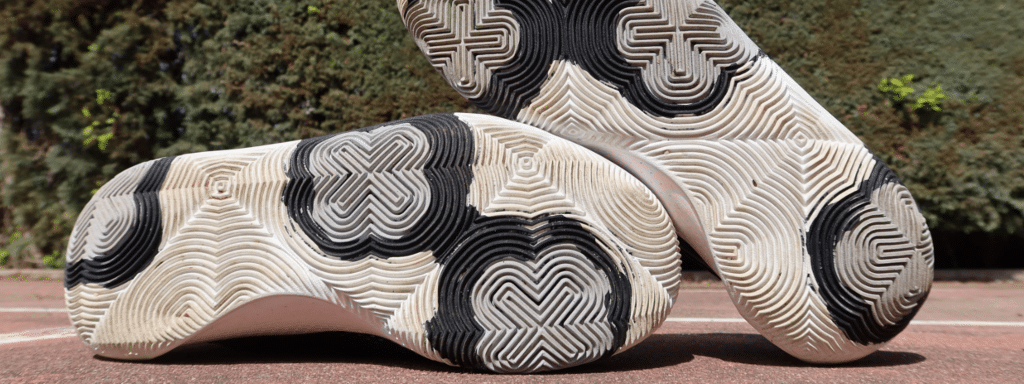
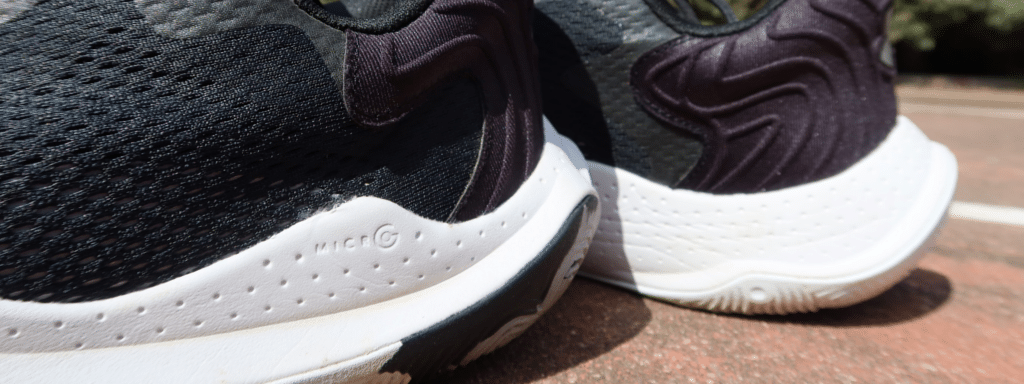
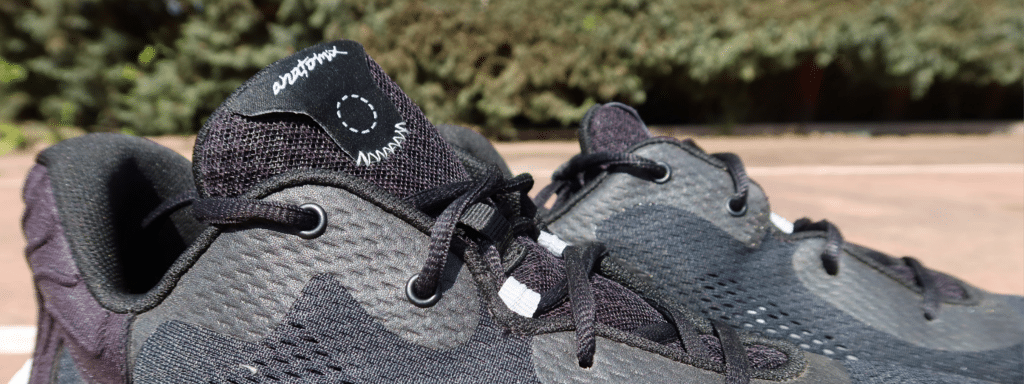
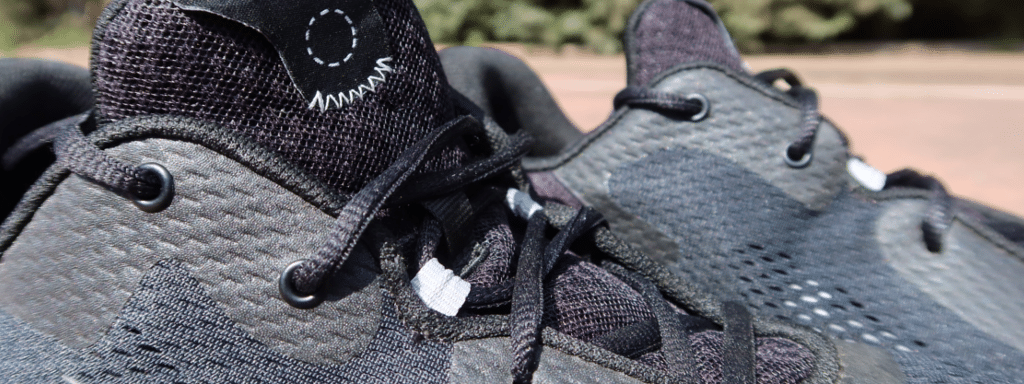
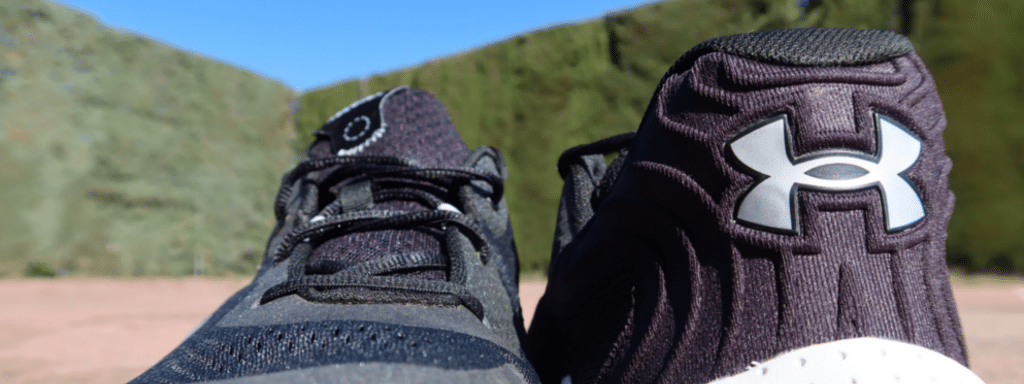
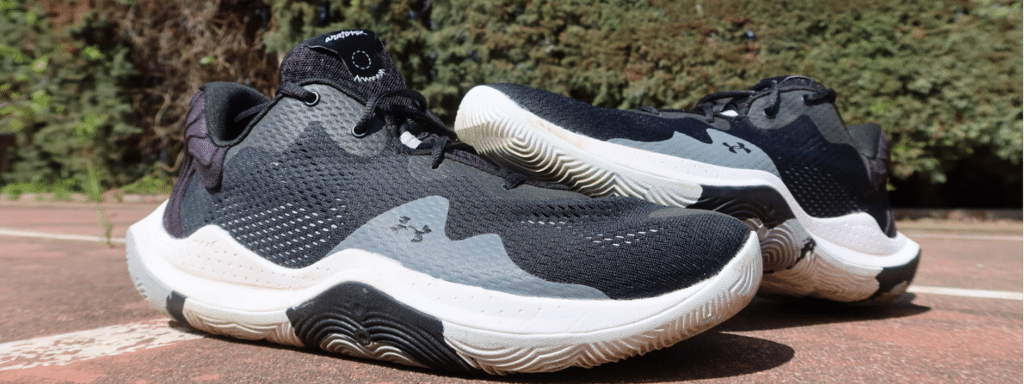
 Style meets performance with the Puma RS-G spikeless golf shoe. I can’t deny that the RS-G looks sweet, but how do they hold up on the course? Let’s find out.
Style meets performance with the Puma RS-G spikeless golf shoe. I can’t deny that the RS-G looks sweet, but how do they hold up on the course? Let’s find out.

